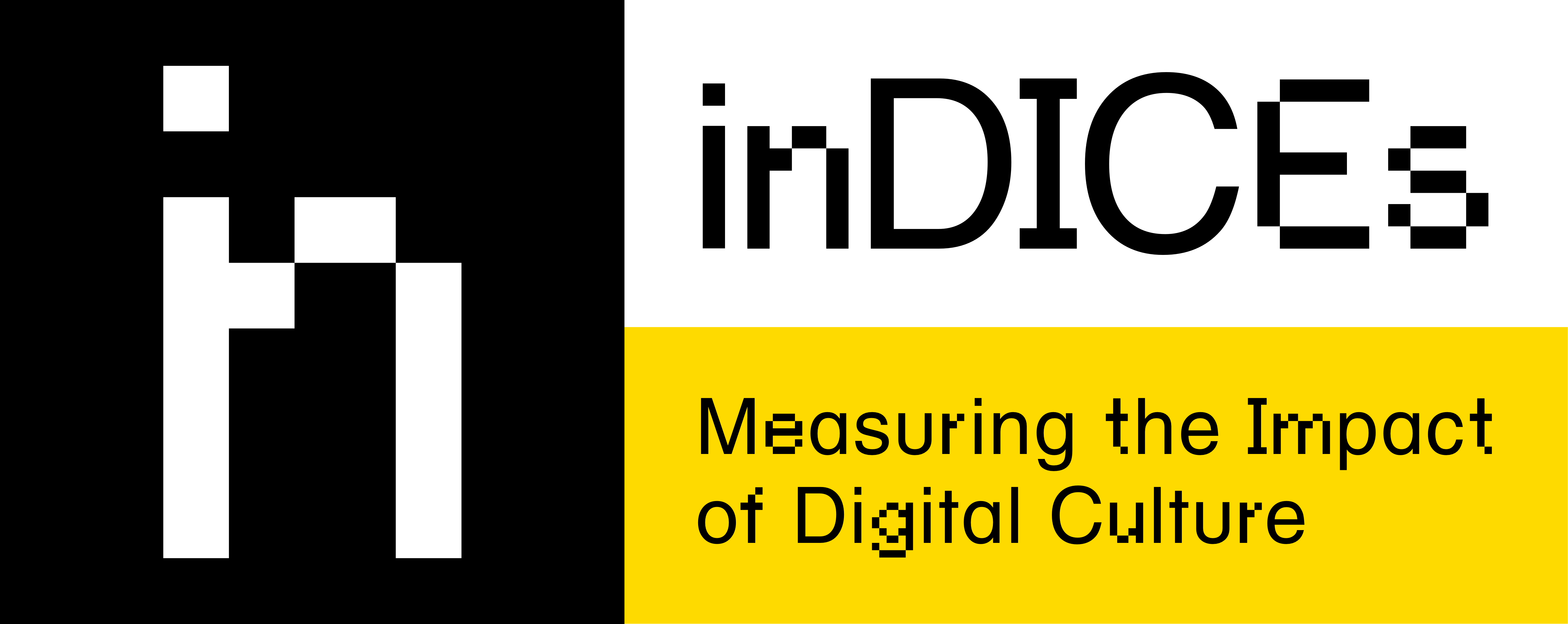One of the goals of the inDICEs project is to understand how value is being created through the reuse of digital heritage resources. We want to advocate for policies that support the development of new services, initiatives and products that create added cultural, social and economic value. In order to do that, we want to demonstrate that reuse of digital heritage resources has an impact – and to understand how this impact happens.
On the second day of our consultation workshop, we invited representatives of cultural heritage institutions and experts from the heritage sector to share their experiences and views about the development of such cultural value chains. We wanted in particular to understand the perspective of institutions: the advantages that they perceive, and the challenges that they face. You can learn about the first day of our workshop, devoted to the issue of digital heritage as intellectual property, in our previous blogpost.
A good example of such reuse is the Rijksstudio project, based on the digitized collection of the Dutch RijksMuseum. The digital works of art are presented there. In fact, the “entire online collection of Rijksmuseum images is available in pin-sharp clarity.” But what is more important, is that a user can “use Rijksstudio to work with [one’s] favourites or create beautiful prints of any detail [one] chooses.” Thus, it is not merely a collection of digitized works of art placed on a website. The museum encourages reuse: the application of works from its collection in a product or service that has specific functions and functionalities valuable to the potential user.
While Rijksstudio has gained – much deserved – fame as a best case example of facilitating reuse of heritage, there are many other such cases. Our database includes as well the Inkulinati project, a crowdsourced strategy game reusing medieval drawings of animals from illustrated manuscripts. New search and discovery engines, such as Creative Commons Search and Picryl provide new interfaces to heritage collections. Game maker Ubisoft has been using archival resources to recreate historical buildings for the Assassin’s Creed games. ArtLensAI is an AI-powered artistic project that matches user photographs with paintings from heritage collections. During the pandemic, 100 000 people joined the Getty Museum Challenge and recreated at home a painting. We have mapped in our database over 100 cases of such reuse and value generation (and we are looking for more – you can share them by filling this simple form).
At the start of our workshop, Alek Tarkowski from the Centrum Cyfrowe Foundation, our Polish consortium member leading our policy work package, gave a talk about the role of digital cultural resources in modern societies. He talked about a changing vision of how heritage is made available and used, from a focus on individual collections of particular institutions to a global perspective based on a vision of the commons and the capacities of modern telecommunication technologies. He also underlined our changing understanding of the role of heritage – from a purely cultural to a view of heritage as a force with multiple forms of positive social impact. You can watch his whole talk here.
Our second keynote speaker was Merete Sanderhof from the Danish Statens Museum for Kunst, the Danish national gallery. In her talk, titled “Building New Creativity with Old Collections”, Merete highlighted the multitude of projects conducted by SMK to support reuse of its resources. For over ten years, SMK has been implementing a strategic vision of being a catalyst of users’ creativity. For the last five years, the “SMK Open” project has been developed with the aim of setting art free – and in the process, the gallery became one of the leading institutions embracing the Open GLAM model. Merete’s talk is available here.
Breakout sessions
The core part of our workshop, conducted in breakout sessions, was devoted to in-depth conversations among workshop participants. We wanted to tap into their collective knowledge and learn about their experiences with digital heritage and its impact. We benefitted from insights and experience of representatives of the UK National Lottery Heritage Fund, Cultural Intellectual Property consultancy, Polish National Film Archive – Audiovisual Institute (FINA) and Creative Commons, among many, many others.
In our conversations, several key themes emerged. Firstly, the context of the Covid-19 pandemic was often mentioned, and its massive impact on cultural heritage institutions (The NEMO surveys, as well as ICOM & UNESCO reports, are a valuable point of reference here). The pandemic and the shift to remote and digital that it required has given an immense boost to digitisation, but also blocked a lot of potential creativity. Online collections have often experienced visits many times greater than average. But the sudden shift online has often stretched thin institutional resources and capacities of many teams. It is in this overarching context that we need to discuss reuse of cultural heritage.
Secondly, participants often pointed out copyright rules as a major barrier to access and reuse. Licensing mechanisms were pointed out as creating unnecessary barriers to access and reuse. And lack of accessible legal information translates into unnecessary costs that institutions face. As one participant mentioned, copyright rules will remain a challenge, so it has to be addressed and we need to search for possible scenarios allowing us to work on opening up our collections.
Thirdly, many voices made the argument that access is just a starting point – even if many institutions still deal with challenges of providing sufficient access to their collections. When we look deeper, it is impact – obtained through the use of digital cultural resources – that should be the key, strategic goal. Achieving impact requires broadly understood dialogue with audiences so that actions are tailored to the needs of users and different, particular target groups. A specific audience highlighted in our conversation where local communities, which can grow through processes initiated by cultural institutions. This theme was also highlighted by Merete in her talk.
Join our heritage reuse survey
We are now incorporating the insights into a report on value chains built on the basis of digital heritage resources. As we move into 2021, you can expect further conversations about the impact of digital heritage and ways that we can build in Europe policies that support this goal. And we are still on the lookout for great cases of reuse and impact that digital cultural heritage can make – you can help us by adding cases to our catalog.


